A two-part feature by RANJITHA ASHOK for The Season, based on the book Four Score & More – The History of the Music Academy, Madras.
Carnatic music and dance.
In a word – Intimidating.
In fact, this is a world where both artists and aficionados are very intimidating; a world with a certain distant mystique, an austere air…a bit like a particularly hard-to-please aunt whose approval you’ve always secretly sought, but never quite gained.
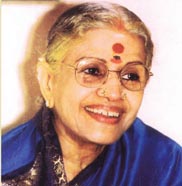 | 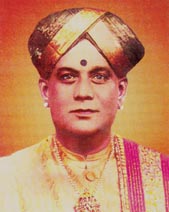 | M.S. Blue... and grand turbans and Kadukkan. |
It has its own esoteric language, gestures, movements – and if you happen to find yourself in an auditorium suffused with the Classical atmosphere, surrounded by Classical outfits, Classical jargon, and a shimmering stage awash with the Classical art forms, and haven’t a clue what’s really going on – well, it’s a little like being a very small mouse that’s wandering into a Big Cat Convention.
The connoisseurs nod briskly; they clap at crucial points, applauding a particularly well-executed bit of vocal, or physical, pyrotechnics. (Incidentally, this is the sort of restrained excess that the average South Indian Carnatic Performing Arts Aficionado allows himself, as leaping from your seat excitedly, dancing in the aisles, or joining lustily in the… er…chorus is just not done.)
You are clueless, but nod and shake your head too, so that you just don’t appear too ‘out of it’. (Sometimes, if your inferiority complexes are really acting up, you’ll nod vigorously, or fling your palms upwards, at odd times, just to show that you are catching little nuances that wiser and more knowledgeable heads than yours have missed.)
Basically, you are one big ‘Gnana-shooniyam’, completely out of your depth in this exclusive world.
So it comes as a bit of a shock when you are asked to ‘do a piece’ on the book, Four Score &More – The History of the Music Academy, Madras by Sriram V. and Malathi Rangaswami.
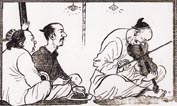 Concert by Musiri Subramania Iyer for the Academy, as seen by cartoonist Mali.The violinist is Semmangudi Narayanaswami Iyer and the mridangam artiste is Thanjavur Vaidyanatha Iyer. |
Now, the world, or that section of it concerned with matters Carnatic, knows that the Music Academy is an iconic institution, dedicated to the arts. It was founded in 1928 and, from 1929, it began hosting Annual Conferences on music. These Conferences are the basis for the famous Madras (now Chennai) December Season, a massive cultural event that’s an unique experience.
The book chronicles in great detail the history of this institution over a period of eighty years, and the role it has played in the areas of Indian Classical Music and Dance, especially Carnatic music and classical dance. A complete kaleidoscope of the life of the Academy, it brings alive key personalities, the events, the luminaries, and carries a veritable photo gallery within its pages, along with cartoons, handbills, advertisements from cooks – a colourful panoramic view which also reflects the changing world outside.
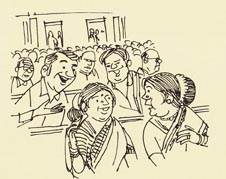 | 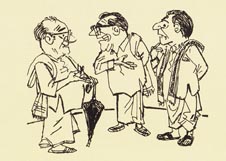 | Sruti's Sarathy captures the rasika-s. |
For Sriram V. this was a labour of love, for it concerned the Academy, which always fascinated him, since it “served the interests of Carnatic music, my favourite art form.” For Dr. Malathi Rangaswami, the sheer uniqueness of the institution has always been a source of fascination (that word again), and she, realising that its history has not yet been chronicled, decided to choose this as her subject for her PhD thesis. It was perhaps inevitable that the two ultimate fans of the Academy would collaborate on a book on its history.
Now your own very brief brush with culture came to an abrupt end many decades ago, because (a) you hated wearing pavadai-s, and argued your hapless mother into the ground whenever she insisted you ‘dressed the part’ before your paattu vadiyar arrived, and (b) you wept bitterly every Monday, Wednesday and Friday, whining about how you hated paattu class, until your parents decided to sacrifice cultural growth for a little peace. So the very thought of having to read this book and be scholarly about it seems like unmitigated gall on your part. And it’s harder when one author is a very good friend, and the other is both a very good friend and a mother-in-law! But Chief has asked or, rather, told you to ‘get on with it’, seeing all carping on your part as mere quibbling, and a desire to avoid any real writing work.
So you begin reading – and it slowly dawns on you that you’ve become so used to ‘seeing’ both performers and audiences as creatures from other universe, you’ve forgotten they are but human.
Immediately, the book takes on a whole new perspective – and you become captivated by the all-too-human face of genius and knowledge.
(You can almost hear the rustle of the ‘Our Readers Write’ Brigade in Madras Musings gearing up for critical action: “Sir, Your columnist’s article on the august Music Academy was, in a word, regrettable!”)
Well, they’d be right. Such a serious tome does deserve better – but you know that you just don’t have it in you to offer any perceptive, knowledge-based critique. So, you decide to focus on the ‘back-stories’ angle, and warn readers beforehand that this is not a review.
The squabbles, the egos, the magnificent gestures, the larger-than-life personas, and some truly grand giants who strode, or wafted gracefully, across this art-filled stage – the authors are right.
‘Fascinating’ sums it up.
And all human stories are tales of age-old emotions and needs that never change, even as people cope with altering social landscapes.
Like the traditional wife who, nevertheless stood up to her husband who, in true blue lord-of-the-manor of style, had “forbidden his family from attending the music concerts at the Academy.” Not merely did she attend… she took her daughters as well, dressed to kill in “their best pavadai and chattai.”
Good for her!
The Academy appears to have a serious pecking order in place. Where you sit does matter. Obviously, ‘Mylapore vakil aathu mattuponnu’ was not just a line in an old film song! These were feisty women who wore diamond billaqs and madisar sarees, played badminton and bridge, hostessed the haute monde of the nation, and who cornered select sections of the auditorium for themselves… and God help anyone who tried to oust them.
You’ve seen it yourself over the years – old-timers kicking up a fearful fuss when told to move.
The personalities who set the tone. M.S. Subbulakshmi, with her sparkling diamonds, and her signature M S Blue, with Kanchipuram Muthu Chettiar weaving sarees specially for this truly stunning lady, whose face and voice rivalled with each other for divine beauty. Her way of wearing her hair, and the placing of flowers in her chignon, apparently had the ladies scrambling to imitate her. ‘Wannabes’ have obviously been around for decades.
The men were not to be outdone either – diamond kadukkan-s and rings, angavastram-s, panchakacham-s, brocade shawls, grand turbans and hairstyles that changed with the decades. Over the years, peacock-y styles gave way to a starker simplicity among the men, moving between classic Indian and Western styles. The Academy dictated couture. Even the covers for the instruments have made a statement over the years.
The Academy saw other forms of human skills… like the fine art of socialising, which could perhaps help you …er… graduate towards the important rows. (Sometimes, you might just find your eyes need shielding against the blinding, high voltage social glitter all around.)
The word ‘networking’ was yet to be discovered, but there was a lot of that within the auditorium, given that the audience was sprinkled liberally with “cabinet ministers, judges, business and newspaper barons, landholders and film makers” in addition to “the ennobled and titled and the old moneyed families.”
The Academy also honed your diplomatic skills, especially those of the young volunteers, who handled the proceedings during the Season. Some of them recall how they got to know the top brass in the City, which came in handy when they were old enough to look for jobs. VIPs (and quite often the tougher halves – their wives) would land up without passes and demand to be allowed in and seated. “The job of the volunteer was not easy.” But, for the most part, the volunteers had a great time, and remember some extraordinary gestures of warmth and kindness on the part of very senior people, and artists as well.
The passion for the arts did not, however, stop certain aficionados from holding out for free tickets – okay, no need to get judgmental – very few can resist the lure of the freebie. But then you also had dragons like ‘KVK’ who had no problem in calling even luminaries to order over infractions.
The more high profile the audience, the more important it was for the artistes – understandably – since Government appointments and new engagements came out of this exchange.
Another in-built perk seems to have been matchmaking. Many matches were made during The Season, including that of co-author of this book, Malathi Rangaswami, to TTK’s third son, T.T. Rangaswami.
(To be concluded next fortnight)
|